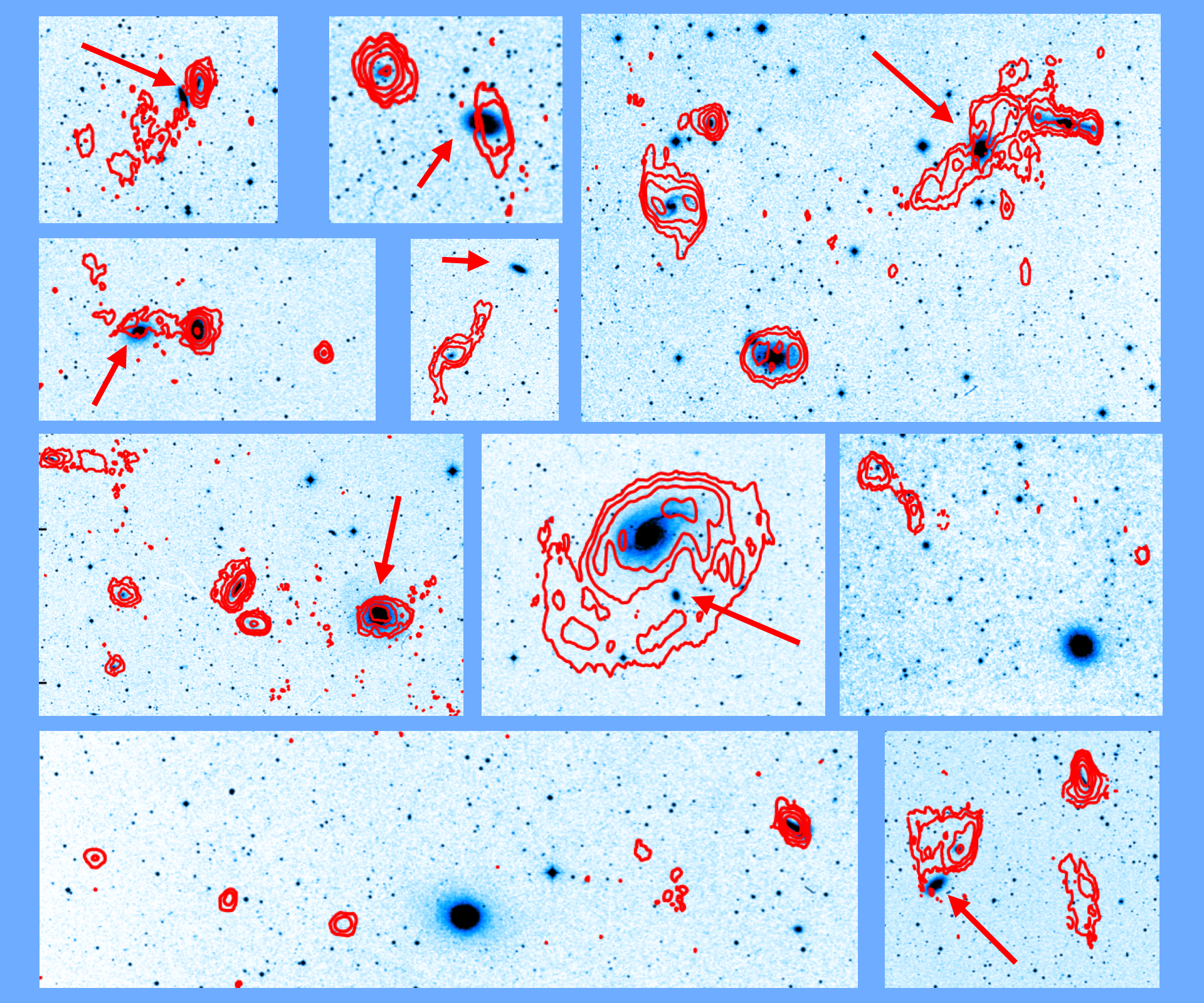Daily Image
02-09-2008Has anyone ever told galaxies that "good fences make good neighbours"?
| Submitter: | Paolo Serra |
| Description: | Galaxies are not evenly spread throughout the Universe. Rather, they tend to cluster in more or less large groups (or, indeed, clusters) which can contain from just a few to many thousands of galaxies. Galaxies within a given group are relatively close to each other and are likely to interact, so that their "life" is different from that of an isolated ("field") galaxy. Indeed, environment is known to be a fundamental driver of galaxy evolution. Also the neutral hydrogen (HI) properties of galaxies are strongly affected by interaction with neighbouring galaxies and with the medium between them. This effect is being studied in details by the SAURON and Atlas3D teams. A WSRT HI observational campaign of a large sample of early-type galaxies (ellipticals and lenticulars) is being lead by R. Morganti, T. Oosterloo and P. Serra at ASTRON. Environmental effects are just one of issues that these data will allow us to address. These data show that in the densest environments (clusters) almost no early-type galaxy hosts HI. In less dense environments (field and small groups), roughly 50% of early-type galaxies contain HI, which is found in a variety of configurations. As shown in the figure, often the HI is clearly unsettled and reveals galaxy-galaxy interaction which could not have been guessed judging from the optical image (in the figure, arrows indicate the actual target of the WSRT pointing). Galaxies can have a very strong impact on the properties of their neighbours and radio HI data are very effective in revealing this. The large incidence of disturbed systems (about 30% of the detections) shows that interaction with neighbours is a very important aspect of galaxy evolution even outside the densest clusters. |
| Copyright: | Atlas3D team |
| Tweet |  |
